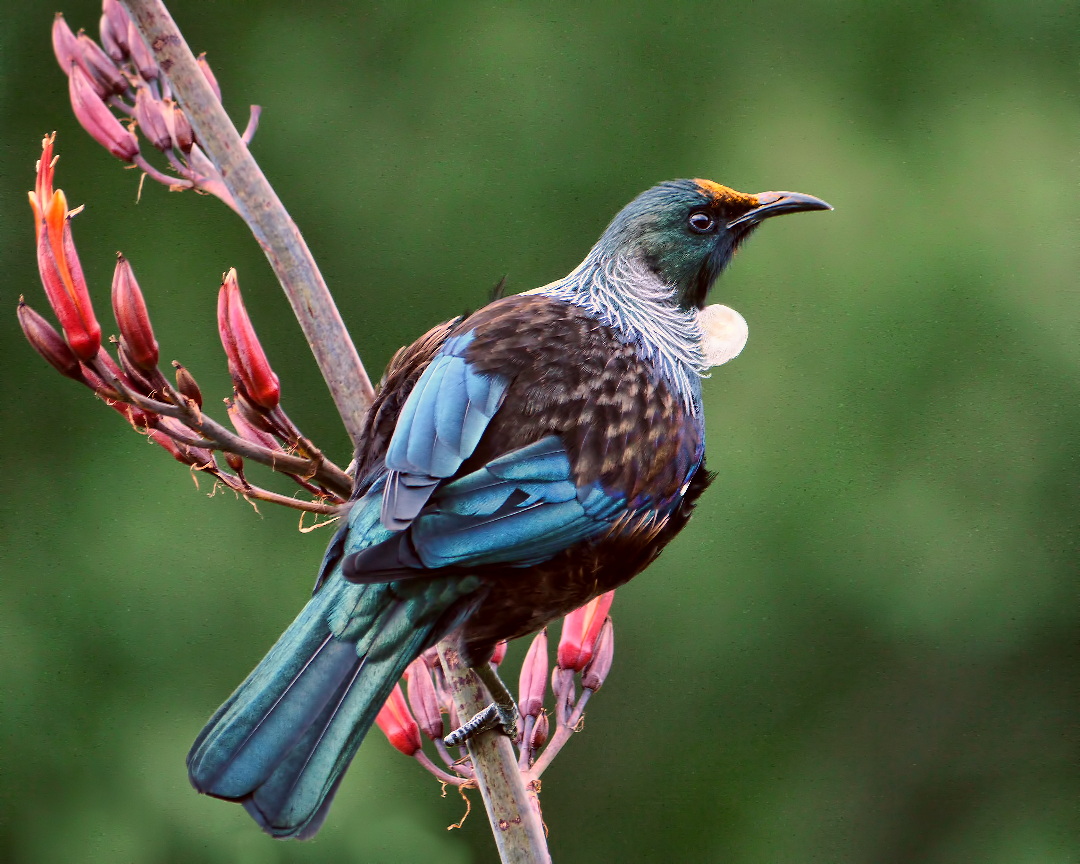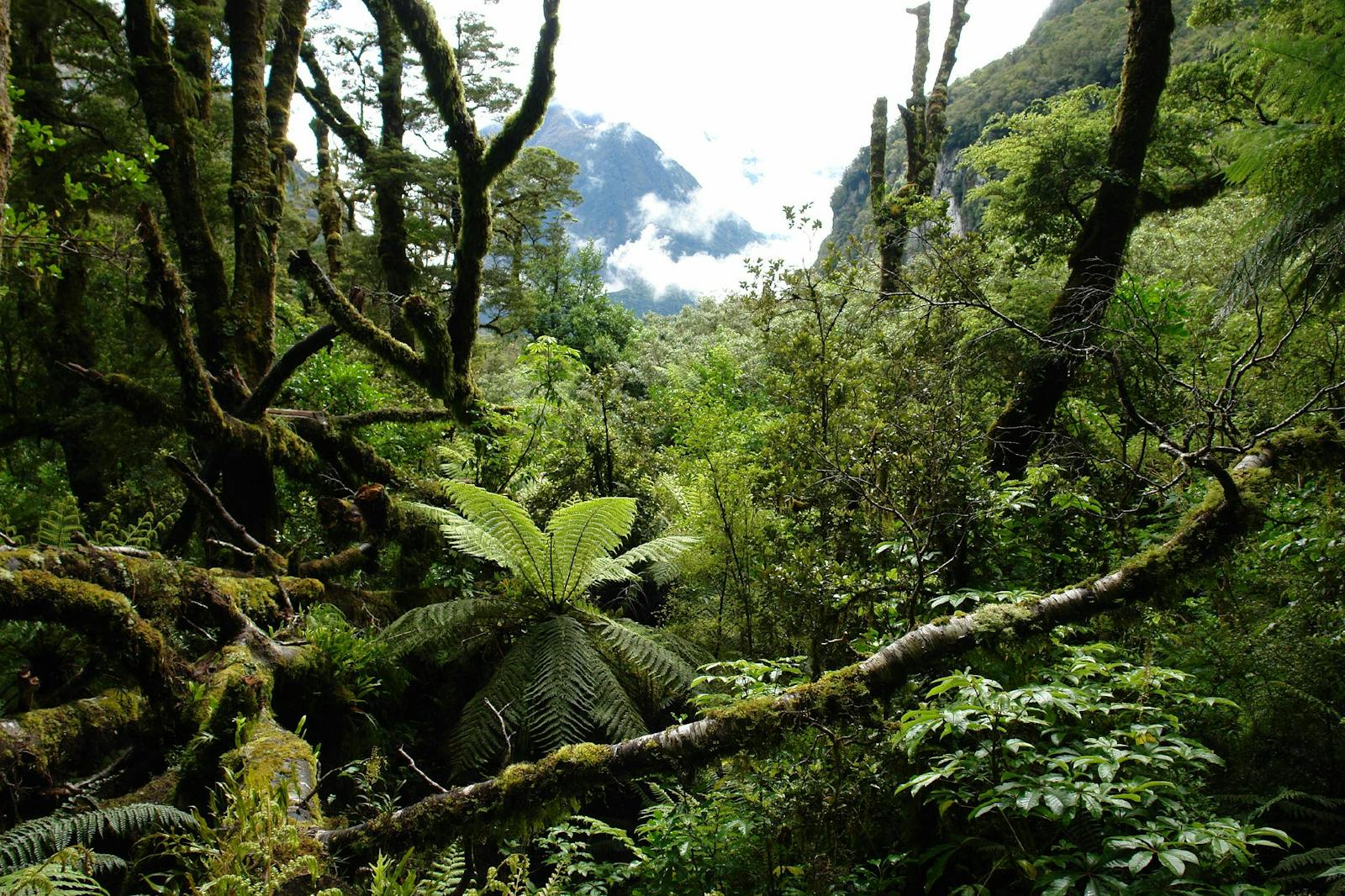New Zealand South Island Temperate Forests
The ecoregion’s land area is provided in units of 1,000 hectares. The conservation target is the Global Safety Net (GSN1) area for the given ecoregion. The protection level indicates the percentage of the GSN goal that is currently protected on a scale of 0-10. N/A means data is not available at this time.
Bioregion: New Zealand (AU1)
Realm: Australasia
Ecoregion Size (1000 ha):
1,171
Ecoregion ID:
172
Conservation Target:
29%
Protection Level:
7
States: New Zealand
The southeastern lowlands of the South Island of New Zealand were originally covered in dense podocarp (Podocarp totara)-dominated temperate forests. These primitive gymnosperm trees and the Southern beech (Nothofagus spp.) in these ‘bottom of the world’ forests reflect New Zealand’s long isolation and legacy to ancient forests of the Gondwana supercontinent of past epochs.
Most of the original forest has been lost, but the rugged hills of the Catlins in the far southeast still retain some extensive and dense temperate rainforest. This remains the largest native forest on the east coast of South Island. Rimu (Dacrydium cupressinum), totara (Podocarpus totara), silver beech (Nothofagus menziesii), matai (Prumnopitys taxifolia), and kahikatea (Dacrycarpus dacrydioides)—New Zealand’s tallest tree growing up to 30 m—are common species. Undergrowth plants include lancewoods, kamahi (Weinmannia racemose), spider orchid (Brassia caudata), Easter orchid (Earina autumnalis), crown and tree ferns, marble leaf, fuschia, red matipo, wineberry, mahoe, and coprosoma. Dense forests of kahikatea (Dacrycarpus dacrydioides) once covered the more fertile river valleys. Higher and more northern inland habitats are dominated by the tawhai (silver beech). These beech forests are unusual in that there is only one of New Zealand’s five beech species present.

The flagship species of the New Zealand South Island Temperate Forests is the tui. Image credit: Wikipedia, Sid Mosdell (CC by 2.0)
On coastal headlands, the endemic Catlins coastal daisy (Celmisia lindsayii) and red-flowered southern rata trees are resilient in the face of strong winds on coastal headlands. The native sedge pingao and shrub Hebe cupressoides are now endangered. Ti kouka (Cordyline australis), the unusual cabbage tree whose fruit is favoured by pigeons, occurs as two varieties that do not overlap in their distribution in the ecoregion. The threatened fernbird (matata) can be found along the reedy riverbanks. Other land birds include the yellowhead (mohua), kakariki (New Zealand parakeet), the tui (Prosthemadera novaeseelandiae), fantail (piwakawaka), and kereru (Hemiphaga novaeseelandiae). The southern forest gecko (Mokopirirakau spp.) occur in the Catlins. Long-tailed bats (Chalinolobus tuberculatus), one of only two native non-marine mammals in the ecoregion, favor 100 years or older trees for roosts.
Most of the ecoregion has been deforested. Ship rats (Rattus rattus), stoats (Mustela erminea), and possums (Trichosurus vulpecula) are invasive and rapaciou predators in the mainland forests of New Zealand, doing great damage to populations of native birds, invertebrates, and plants. These mammals were first introduced to New Zealand in the 1800s and are implicated in the extinction of at least nine bird species. The South Island saddleback (Philesturnus carunculatus) survives but continues to be heavily impacted. Introduced wasps kill native invertebrates and threaten some native bird populations. Feral pigs, deer, and mountain goats are among several introduced herbivores that degrade forests, higher elevation and coastal shrublands, and wetlands. In addition to Catlins Forest Reserve, there are several other larger blocks of relatively intact forest in conservation areas, including Longwood Forest, Slopedown, Dunsdale, and the Takitimu Conservation Area with higher alpine areas. Seaward Moss and Waituna/Awarua Wetlands protect coastal and wetland habitats. Introduced wasps outcompete and kill native invertebrates.
Priority conservation actions for the next decade
- Support the South Island saddleback translocation program to predator-free island reserves, which has been successful in reviving the South Island saddleback from 36 birds to more than 1,200 birds.
- Support Wasp Wipeout, a program aiming to eradicate invasive wasps using strategic baiting.
- Protect all remaining native forests in conservation areas.
-
-
- BASF supports second phase of New Zealand biodiversity project. Retrieved from https://www.basf.com/hk/en/media/news-releases/anz/2019/02/BASF-supports-second-phase-of-NZ-biodiversity-project.html
- Walker, S, Lee, B, Rogers, G. 2003. Restoring indigenous biodiversity in the eastern South Island rainshadow zone. Canterbury Botanical Society 37:48-62. https://bts.nzpcn.org.nz/site/assets/files/22597/cant_2003_37__48-62.pdfhttps://bts.nzpcn.org.nz/site/assets/files/22597/cant_2003_37__48-62.pdf
- Widyatmoko, D, Norton DA. 1997. Conservation of the Threatened Shrub Hebe Cupressoides (Scrophulariaceae), Eastern South Island, New Zealand. Biological Conservation 82:193-201
-
Cite this page: New Zealand South Island Temperate Forests. Ecoregion Snapshots: Descriptive Abstracts of the Terrestrial Ecoregions of the World, 2021. Developed by One Earth and RESOLVE. https://www.oneearth.org/ecoregions/new-zealand-south-island-temperate-forests/
-



